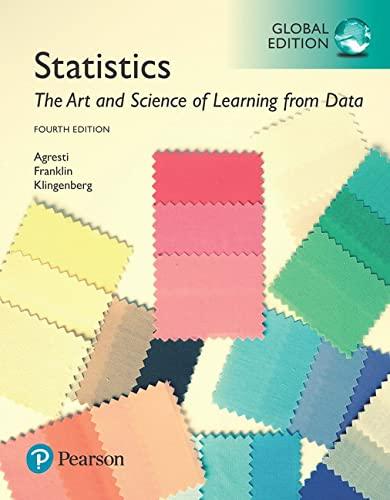10.79 Heavier horseshoe crabs more likely to mate? A study of a sample of horseshoe crabs on...
Question:
10.79 Heavier horseshoe crabs more likely to mate? A study of a sample of horseshoe crabs on a Florida island (J.
Brockmann, Ethology, vol. 102, 1996, pp. 1–21) investigated the factors that were associated with whether female crabs had a male crab mate. Basic statistics, including the five-number summary on weight (kg) for the 111 female crabs who had a male crab nearby and for the 62 female crabs who did not have a male crab nearby, are given in the table. Assume that these horseshoe crabs have the properties of a random sample of all such crabs.

a. Sketch box plots for the weight distributions of the two groups. Interpret by comparing the groups with respect to shape, center, and variability.
b. Estimate the difference between the mean weights of female crabs who have mates and female crabs who do not have mates.
c. Find the standard error for the estimate in part b.
d. Construct a 90% confidence interval for the difference between the population mean weights, and interpret.
Step by Step Answer:

Statistics The Art And Science Of Learning From Data
ISBN: 9781292164878
4th Global Edition
Authors: Alan Agresti, Christine A. Franklin, Bernhard Klingenberg





